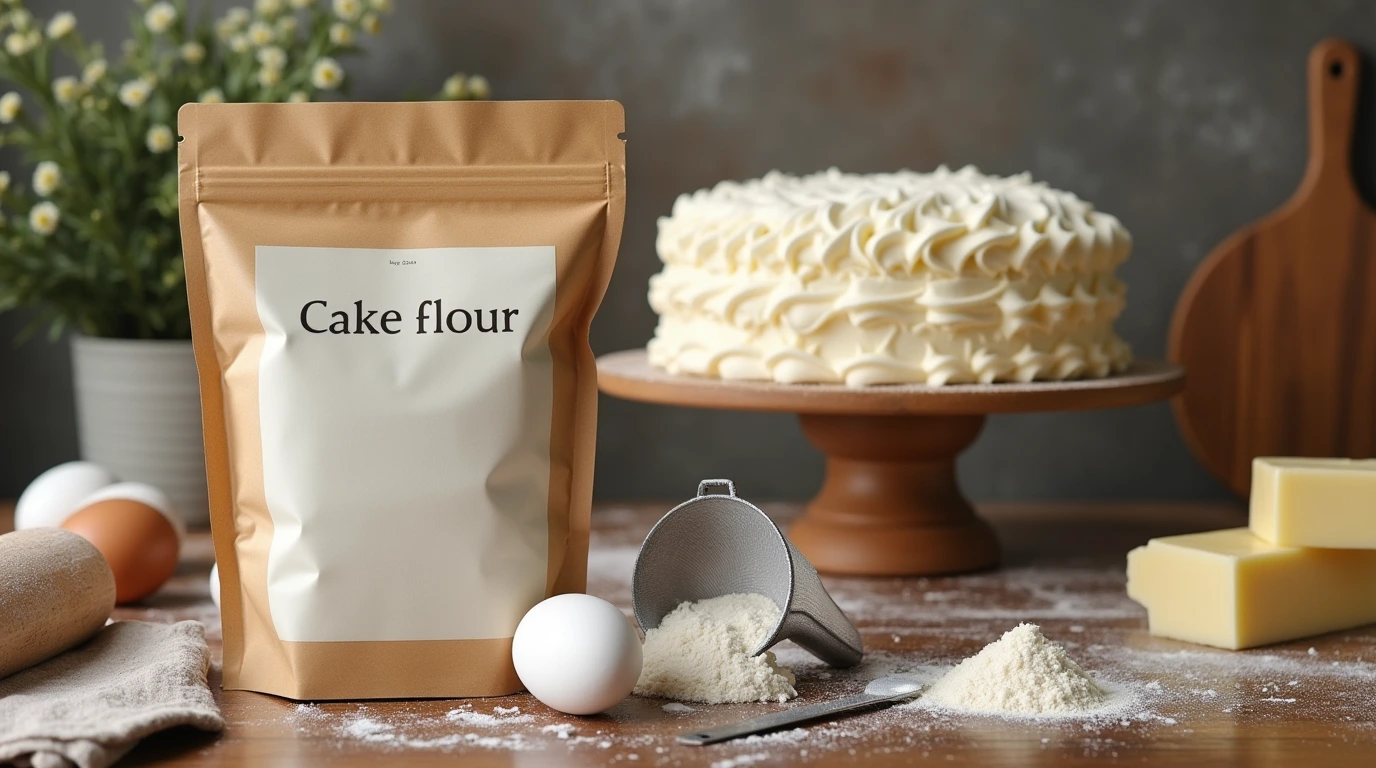Why Cake Flour is a Must-Have: Secrets for Lighter Baked Goods
Introduction
Have you ever wondered why some cakes are so light and fluffy, while others turn out dense and heavy? What if I told you that the secret lies in one simple ingredient cake flour? Yes, this magical pantry staple can transform your baking game and make all the difference in achieving bakery-quality results at home. Are you ready to uncover the secrets behind lighter baked goods? Let’s dive in!
Table of Contents
Overview
Cake flour is not just another type of flour; it’s a game-changer when it comes to creating tender, delicate baked goods. This recipe focuses on explaining why cake flour is essential and how you can use it to elevate your desserts. The process is straightforward, requiring minimal time and effort, making it perfect even for beginner bakers.
- Time Requirement: 15 minutes prep + 30 minutes baking.
- Difficulty Level: Easy.
By the end of this guide, you’ll understand why cake flour deserves a permanent spot in your kitchen.
Essential Ingredients
Here’s what makes cake flour unique:
Key Components:
- Low Protein Content (6-8%): Unlike all-purpose flour, which has a higher protein content, cake flour contains less gluten-forming proteins. This ensures a tender crumb structure in your baked goods.
- Extra-Fine Texture: Its fine grind gives cakes a smoother texture, resulting in lighter, airier creations.
- Bleached Process: Many brands bleach cake flour, which enhances its ability to absorb liquid and produce softer results.
Substitutions and Variations:
If you don’t have cake flour on hand, you can create a substitute by mixing 1 cup of all-purpose flour with 2 tablespoons of cornstarch. However, keep in mind that homemade substitutes may not yield exactly the same results as store-bought cake flour.
Step-by-Step Instructions
Let’s walk through a basic recipe for a classic vanilla cake using cake flour. Follow these steps carefully for best results.
Ingredients:
- 2 cups cake flour
- 1 ½ cups granulated sugar
- 1 tablespoon baking powder
- ½ teaspoon salt
- ¾ cup milk
- ½ cup unsalted butter, melted
- 2 large eggs
- 2 teaspoons vanilla extract
Instructions:
- Preheat Your Oven: Set your oven to 350°F (175°C) and grease two 8-inch round cake pans.
- Mix Dry Ingredients: In a large bowl, whisk together the cake flour, sugar, baking powder, and salt until well combined.
- Add Wet Ingredients: Gradually stir in the milk, melted butter, eggs, and vanilla extract. Mix until smooth and free of lumps.
- Pour Batter into Pans: Divide the batter evenly between the prepared pans.
- Bake: Place the pans in the oven and bake for 25-30 minutes or until a toothpick inserted into the center comes out clean.
- Cool: Allow the cakes to cool completely before frosting.
Tips:
- Sift the cake flour before measuring to ensure accurate proportions and prevent clumping.
- Avoid overmixing the batter, as this can lead to tough cakes.
Assembly
Once your cakes have cooled, it’s time to assemble them into a beautiful dessert.
- Level the Cakes: Use a serrated knife to trim any domed tops for an even surface.
- Apply Frosting: Spread a thin layer of frosting (known as a crumb coat) onto each layer to lock in crumbs.
- Stack and Decorate: Place one cake layer on a serving plate, add frosting, then stack the second layer on top. Finish decorating as desired.
Presentation Tips:
- Add fresh berries or sprinkles for color and flair.
- Dust powdered sugar lightly over the top for an elegant touch.
Storage and Make-Ahead Tips
Proper storage ensures your cakes stay fresh and delicious for days.
- Storage: Keep unfrosted cakes tightly wrapped in plastic wrap or stored in an airtight container at room temperature for up to 3 days. Frosted cakes should be refrigerated but brought back to room temperature before serving.
- Make-Ahead: Bake the cakes ahead of time and freeze them individually wrapped in plastic wrap and aluminum foil. Thaw overnight in the refrigerator when ready to use.
Recipe Variations
Feel free to get creative with your cake recipes! Here are a few ideas:
- Chocolate Cake: Replace ¼ cup of cake flour with cocoa powder for rich chocolate flavor.
- Lemon Cake: Add 1 tablespoon of lemon zest and replace vanilla extract with lemon extract for a zesty twist.
- Red Velvet Cake: Incorporate red food coloring and cocoa powder for a festive look.
Conclusion
Now that you know why cake flour is a must-have, it’s time to put your newfound knowledge into practice. Whether you’re whipping up a birthday cake or experimenting with new flavors, cake flour will help you achieve professional-quality results every time. So go ahead, grab a bag of cake flour, and start baking—you won’t regret it!
FAQs
Q: Can I use cake flour for everything?
A: While cake flour works wonders for delicate baked goods like cakes and pastries, it isn’t ideal for items requiring more structure, such as bread or pizza dough.
Q: Is cake flour healthier than other flours?
A: Cake flour doesn’t necessarily offer significant health benefits compared to other flours, but its lower protein content creates lighter textures, which might appeal to those seeking airy baked goods.
Q: How long does cake flour last?
A: Stored properly in a cool, dry place, cake flour can last up to a year without losing quality.
Happy baking, and remember—the secret to success is right there in your pantry: cake flour!

